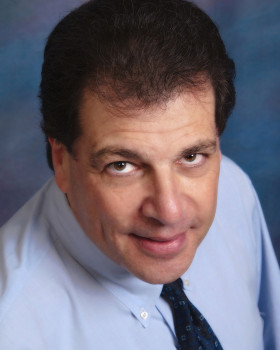If you want to get your client or company on TV, do your own show. Just don’t expect to know exactly how many people tune in.
That’s the beauty and ambiguity of using public-access television to publicize your clients. You can get on TV; the show can air multiple times, but measuring cable access shows is not an exact science.
“Viewer stats are low for each segment here unless you follow something very popular like a real estate or classified show,” says Karen Mess Frashier, director of public affairs for Camcare, a non-profit health system in West Virginia that sponsors a local health show. “We continue to see this as a community education effort rather than a referral mechanism we can measure.”
Camcare’s show airs weekly. The same host recruits different doctors for each segment.
If you or your client is big on community education and/or low on funds, public access television can get you some face time and familiarity in front of a camera.
“Producing a cable show is one of the best ways to communicate stories that aren’t exactly pitchable,” says Mark Grossman, founder of Grossman Strategies in Holtsville, N.Y. “If you’ve got a lot of information to share, but no real news hook, this works.”
That’s why he uses them for groups that always have ongoing activities to promote (social service agencies, community groups, hospitals, etc). Educational programs lend themselves well to this medium, as well. Just make sure there’s plenty of demonstrations to add a little action to show.
Since cable access stations supply free studio time and staff the production with volunteers, you just need to find a good host and a blank videotape. Factor in the cost of duplicating the video, and you’ll still only pay about $300, Grossman says.
“It’s a perfect way to get exposure for non-profit agencies and individuals who may not be able to afford a full-scale PR campaign,” says Sandy McBride of Harmony Communications, a small PR firm in Westchester, N.Y. McBride has become a grass-roots publicist for her local arts community with the assistance of community television. She hosts a public access television program, featuring one guest per week for interview and performance segments.
“A well-produced broadcast raises an artist’s credibility and creates an image not seen on a typical demo tape,” says Jim McBride, who directs the show that his mother hosts. “They can take on the form of a long-format VNR which can be edited and stylized into a smooth documentary look.”
Note that McBride said “well-produced.” If your remote control has ever quickly clicked by the public access shows, you know how crude some of them can look. Both McBride and Grossman have a background in broadcasting and encourage involving someone with some behind-the-camera experience. “Although you want to maintain a little of the homegrown charm, you don’t want it to look like a family video,” Grossman says.
Be careful not to overscript. Given your limited studio space, the setting already will be pretty artificial, so try to keep things real by letting conversation flow, Grossman says. Recruit a good host who’s educated in the subject matter and then give your client talking points, not lines of dialogue.
Lights, camera, advice
So how do you add a little network-quality programming without a big-time network budget?
Mix up the visuals so no one has to watch two people sitting around a small studio talking. A typical lineup starts with an interview with the featured guest(s). Keep this short, then move to a pre-recorded segment that shows the guests doing their gig. For example, when McBride features a musician, they’ll chat, then break for some clips of the musician in different settings. To keep things moving, the musician will perform in the studio.
You also can spice things up by having multiple guests, which works well for hospitals, universities, and other expert hangouts. During Camcare’s show, the host usually interviews two docs, giving them enough time to go into detail without droning on.
Interview people who’ve benefited from whatever it is you’re promoting, and intersperse those clips throughout the show. “Any kind of third-party endorsement is powerful,” Grossman says. Viewers need to be reminded they’re not watching an incredibly long commercial.
For example, to promote a senior citizen program for the Foster Grandparent Program, Grossman gets footage of seniors volunteering in local hospitals. Then he interviews the volunteers and reps from the participating hospitals.
Spark debates.
For example, when a bill for chiropractic insurance parity was up before the New York state legislature, Grossman got some chiropractors up in front of the cameras. He chose six New York Chiropractic Council members from areas of high patient use, booked a local radio host and taped the show. The doctors addressed general questions and “subtly discussed the political issues,” he says. To help the show get on the air, Grossman sent the tape to each chiropractor to submit to his or her local public access station. The tapes went out in early spring, just a couple of months before the end of the session. “We wanted to sway public opinion in a nice, chatty way,” Grossman says. “And public officials do tend to watch public access more than most.”
But you’ve got to be patient with the politicians. The bill passed during the next session.
You can even recycle the show and use clips of it in press kits or video new releases. “A lot of my clients would have never thought of doing a VNR because of the cost, but now they have the footage ready to be sent out,” McBride says.
In fact, the taped shows have worked like PR bait: local artists who never thought they had the money for a publicist hire McBride to send out copies and simple releases to potential venues.

